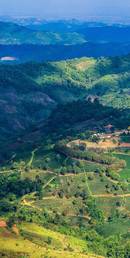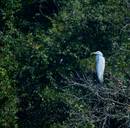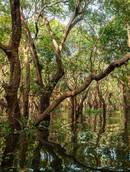News

Since March 2020, we have witnessed numerous parallels between COVID-19 and the climate crisis, including a lack of cohesive, coordinated global intervention and a laissez-faire response to a global emergency.
Inadequate government response to the pandemic has led to preventable deaths from a highly contagious virus, just as inadequate government responses to the climate crisis could result in exacerbated effects by drought, fires or flooding as well as rising food insecurity. These risks are fast approaching their tipping points.
COVID-19 has inundated our lives with numbers and social media updates to the point of statistical overload, a phenomenon WHO refers to as an...

Join our webinar “Knowledge sharing webinar on national forest monitoring in Southeast Asia: Presentation of the Bangladesh Forest Inventory”.
Date: 09 August 2020
Time: 10.30 am, Dhaka time (GMT+6)
Platform: Zoom
Access: https://fao.zoom.us/j/96239073922 (Passcode: 085261)
Forests are essential in achieving almost all SDGs, particularly in Bangladesh where forests play a critical role in reducing the impacts of natural disasters on people’s livelihoods and the national economy in general. In 2015, Bangladesh Forest Department with technical support from FAO and SilvaCarbon and financial support from the USAID, launched the Bangladesh Forest Inventory (BFI), which aims to be a permanent process of national tree and forest inventory...
FAO evidence highlights urgency to scale up actions to transform food systems and halt deforestation
03/08/2020
03/08/2020

Halting deforestation is a critical element in addressing climate change. The way we manage our forests also has a direct impact on the production of our food and food security. The COVID-19 crisis is further increasing pressures on forest resources. Evidence is needed to guide public and individual decisions on addressing these challenges. Two recent flagship reports published by the Food and Agriculture Organization of the United Nations (FAO), the Global Forest Resources Assessment 2020 (FRA) and the State of the World’s Forests (SOFO 2020) present evidence about the state of the world’s forest resources and the policy challenges ahead.
Key...

Nearly 20 years have passed since the first time I stepped into a mangrove forest, yet it is still among my fondest memories. I was already captivated by mangrove ecology through my studies; but it was only when my boots first disappeared under the mud, that I was truly hooked. I arrived at Ko Phra Thong in Thailand to take part in a survey of the mangroves on the island and I was so keen to get started that I didn’t even stop to change from shorts to long trousers, or to slap on some mosquito repellent. Well, they had...

In Costa Rica, deforestation peaked in the 1980s; at that point in time the country had one of the highest rates of deforestation in the world.
However, according to the State of the World's Forests 2016, the country achieved a 54% increase in its forest area thanks to a large national effort, becoming a global example of reforestation success just over 20 years after deforestation peaked.
Forest cover has grown thanks to sustainable agricultural practices, reversal of deforestation and multiple forest policies and initiatives.
“Forests play a central role in combating and adapting to climate change, says Lucio Santos, Forestry Officer, REDD+/National Forest Monitoring Coordinator...

